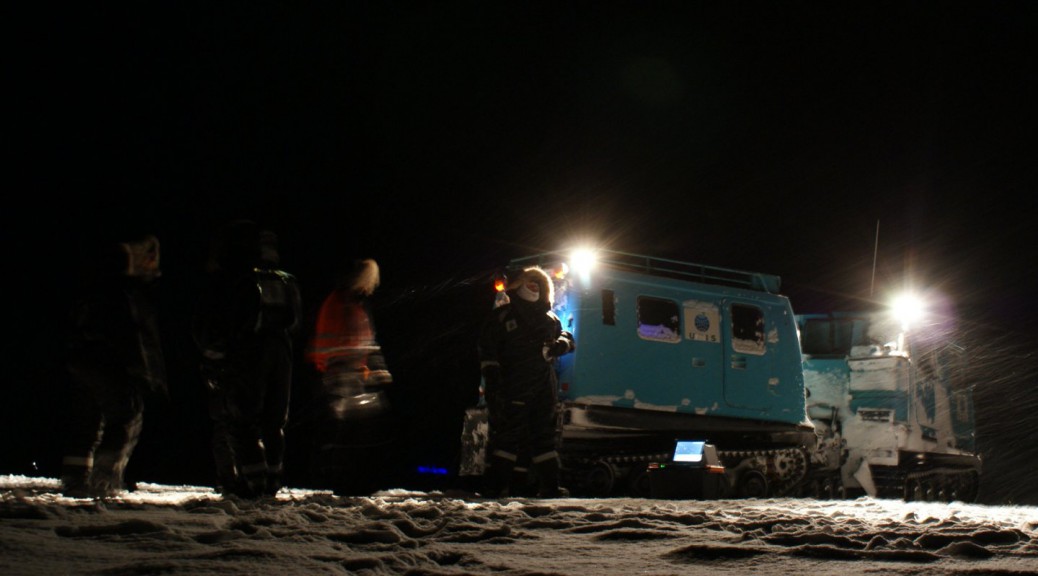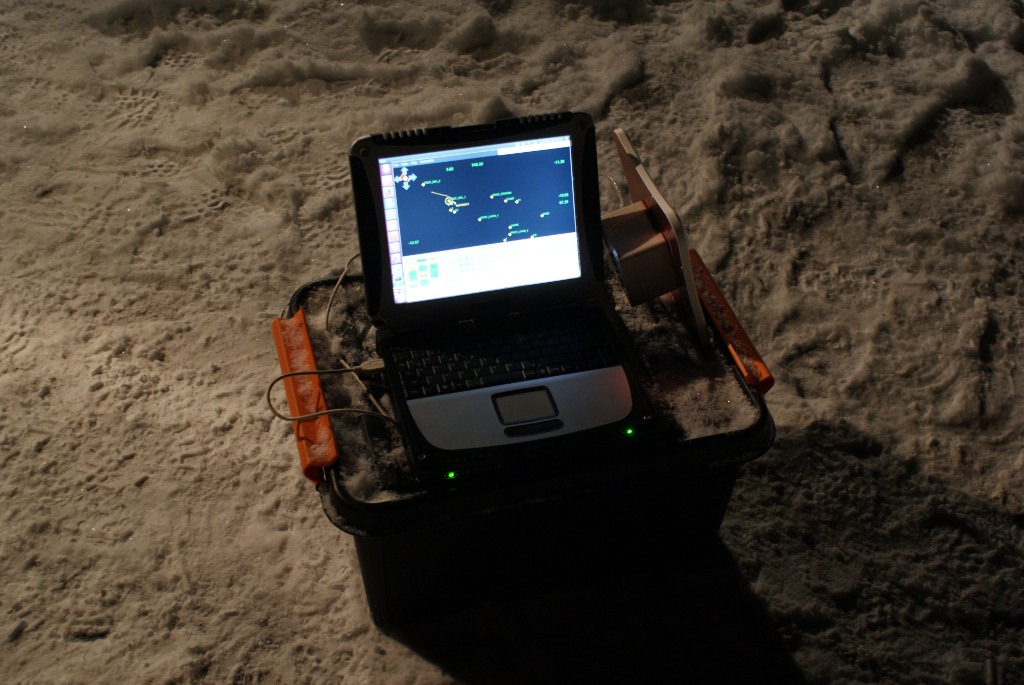In the evening we use the belt wagon to drive to the brink of the transition between ice and water in Adventdalen to measure profiles between sea and land. All four tracks of that vehicle are driven. The steering happens through the hydraulic change of the angle between the front and rear cabin. It is uncomfortably loud inside during the ride, worse in the front as the engine is not really damped.
However, the cabin has the distinct advantage of an easy installation of the 5-hole probe and the fast temperature sensor during the flight preparation. Reading the logger and reprogramming after flight is also a lot easier then on snow scooters.
In general there is little precipitation on Svalbard, it is more of an Arctic desert. Today there are thick snowflakes. We have not yet flown under such conditions. We fear that the fine 12µm platinum wire of the rapid temperature sensor might brake, but we try it anyway.
The wire actually breaks during the third profile just before the descent from 500m. It seems that there was no direct influence from the aircraft. The engine was constantly running at half throttle and there were no strong actuator movements.
The downward facing infrared radiation sensor measures a significantly lower temperature in high altitudes than the soil temperature measured at low altitude. It could be that the raw flakes are colder during the fall as they come from higher air layers.



